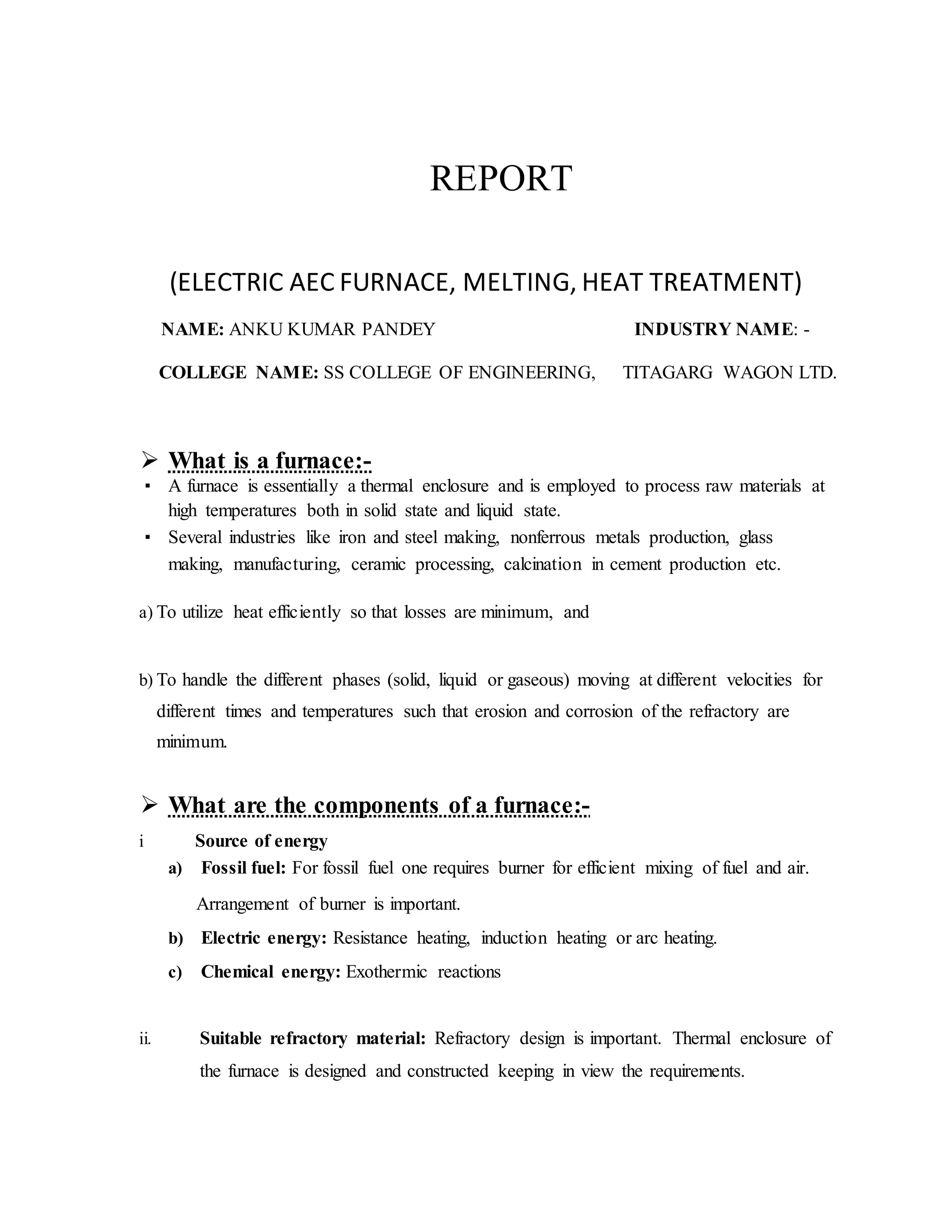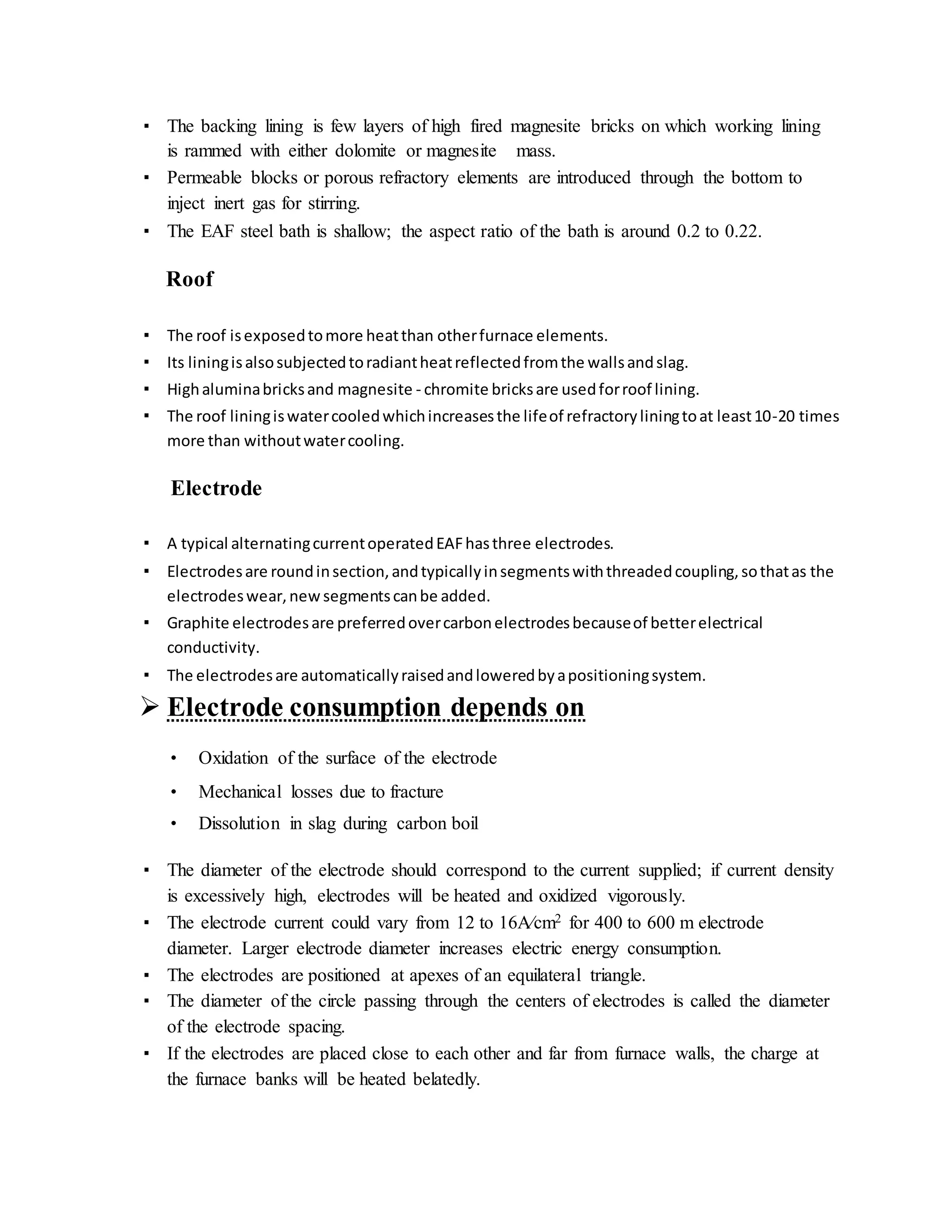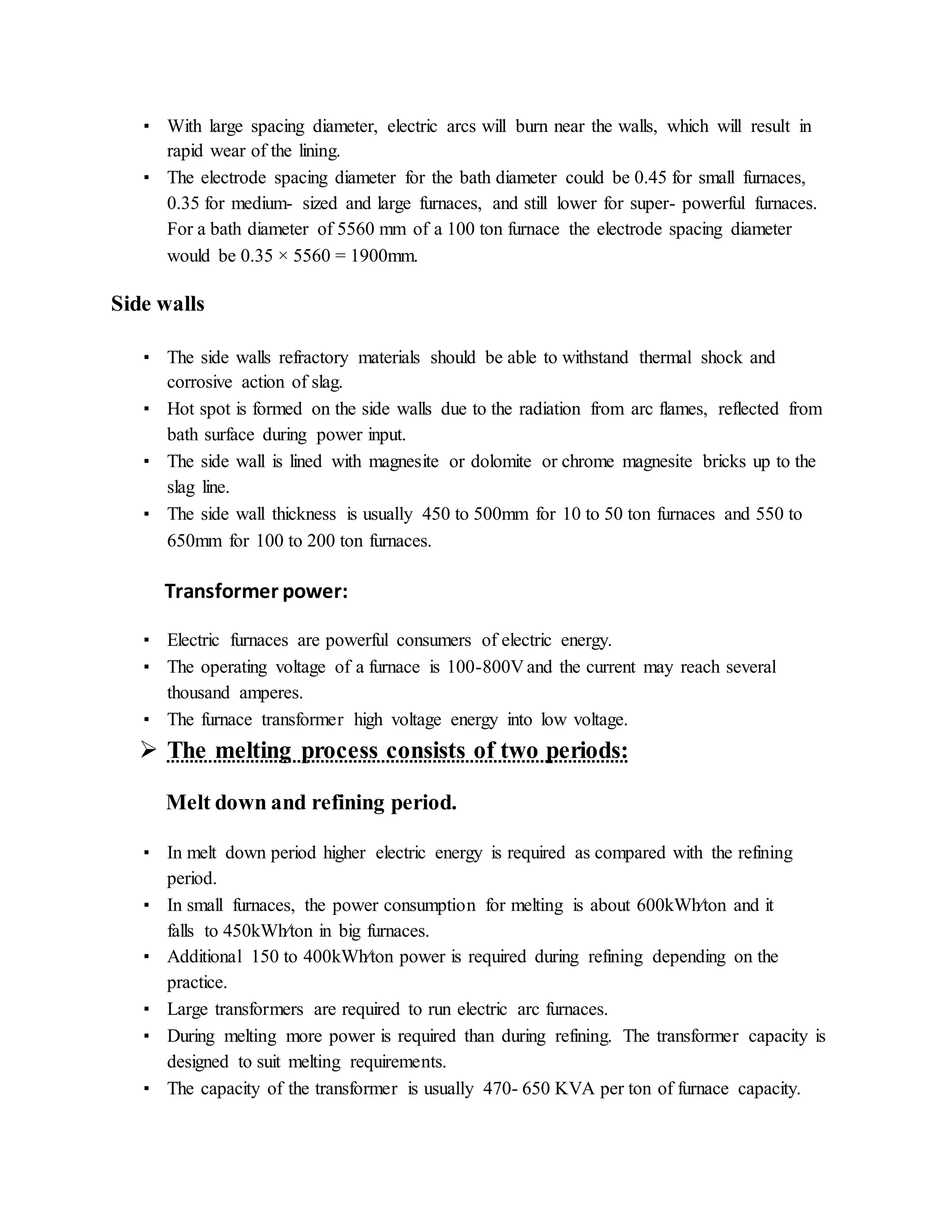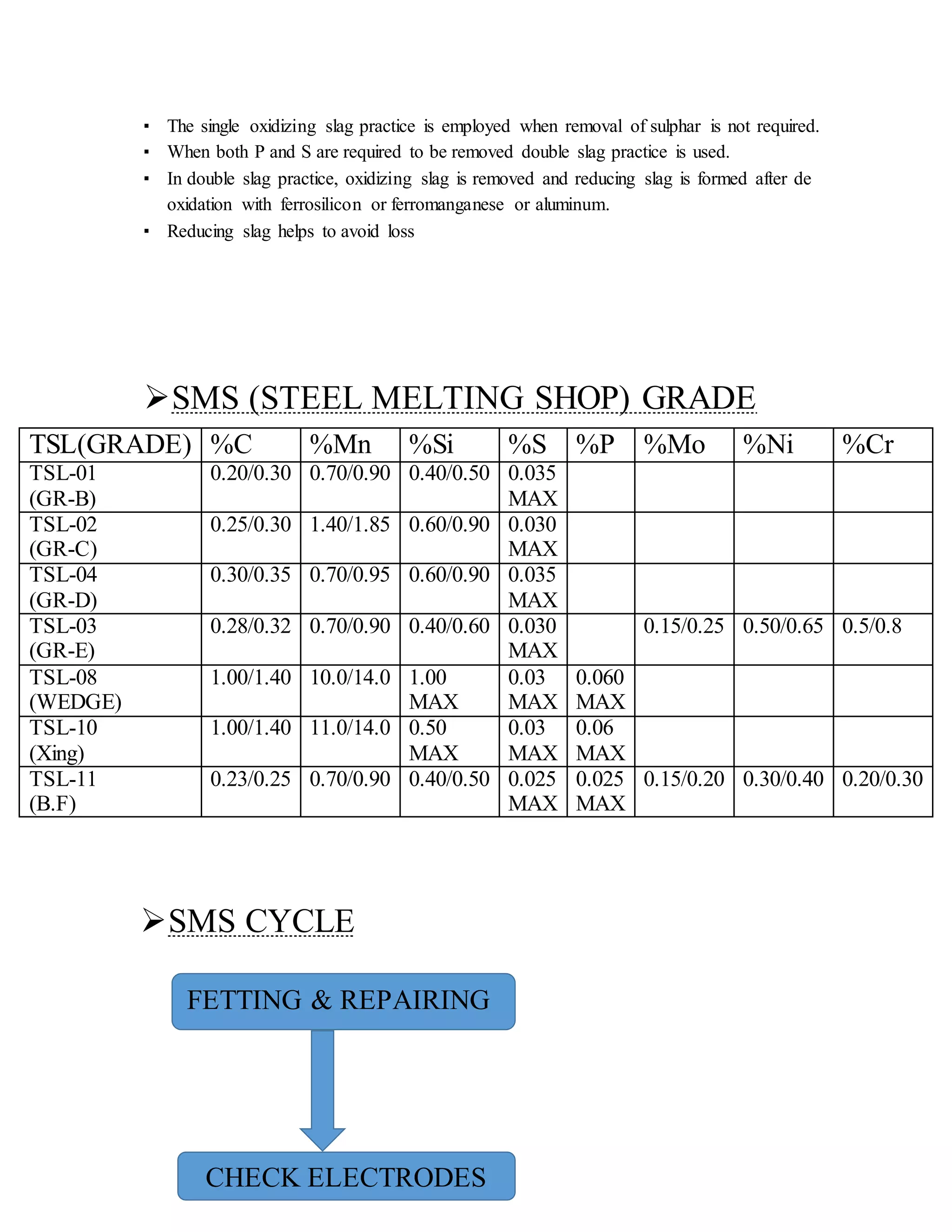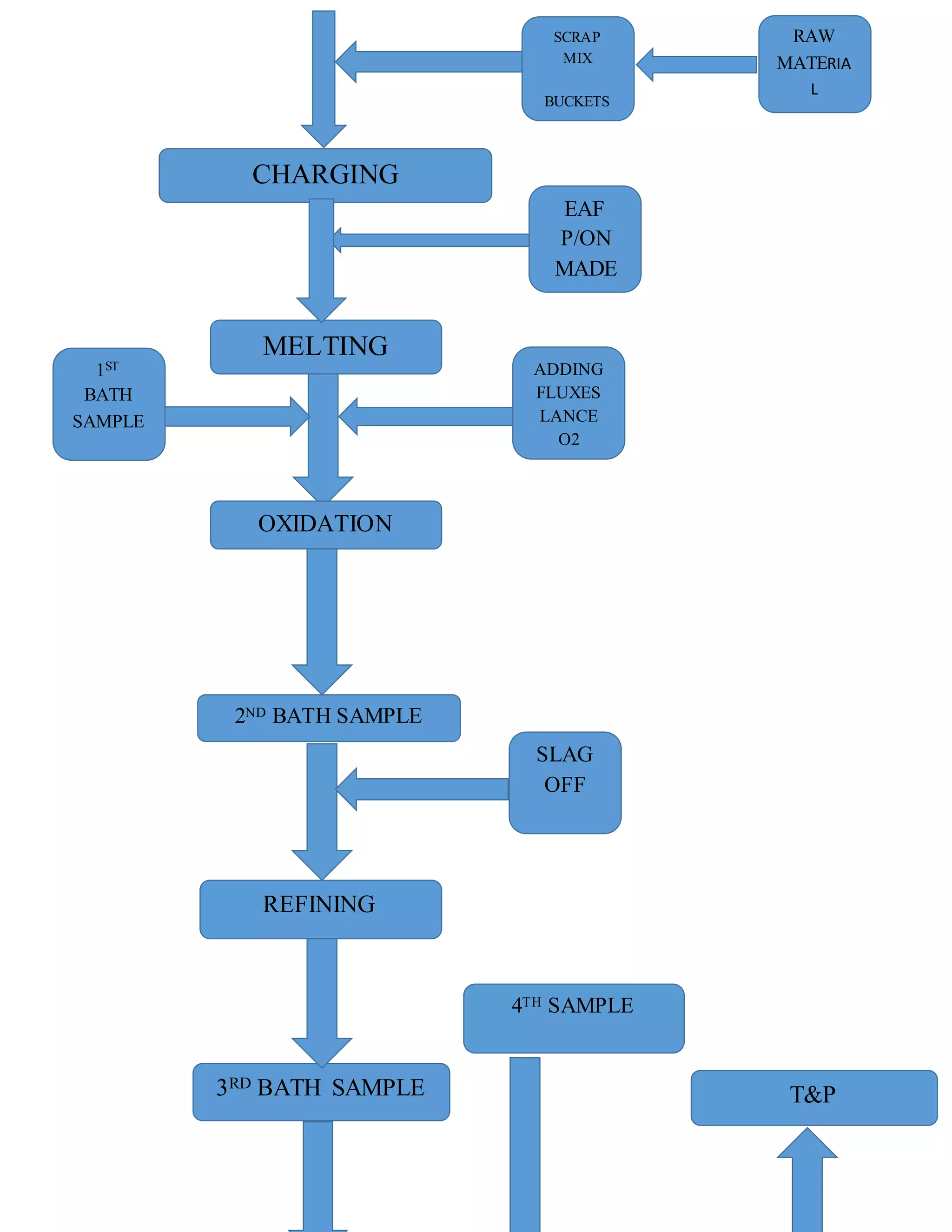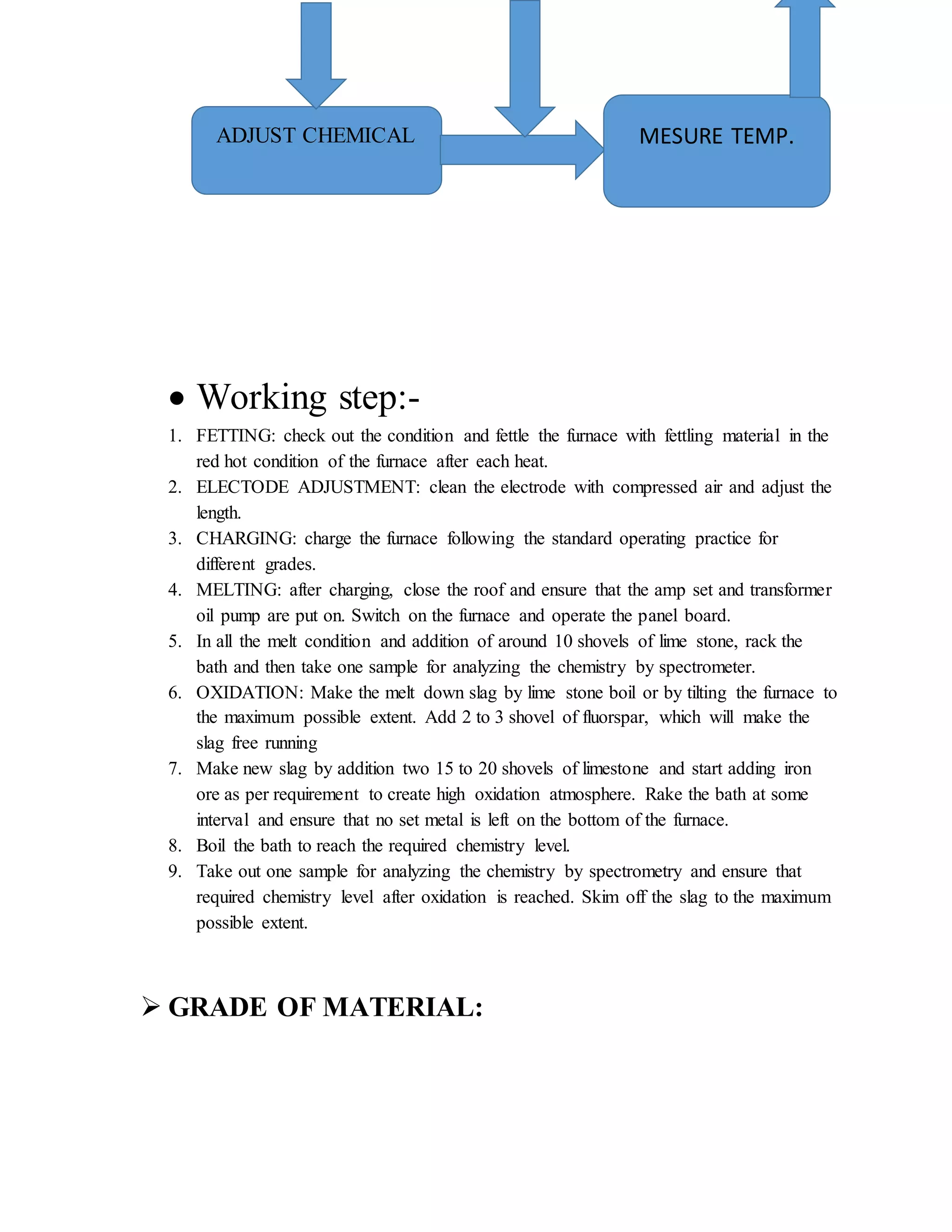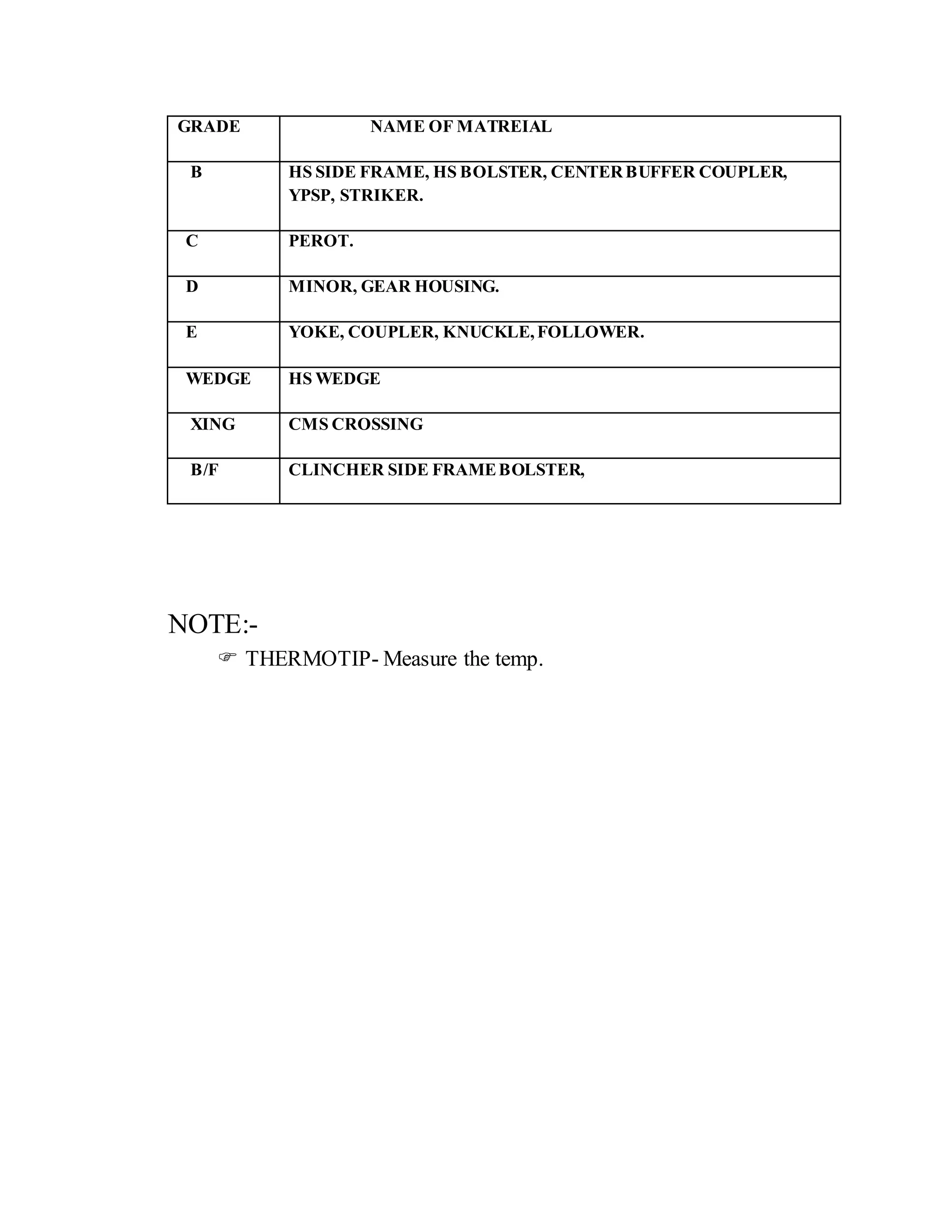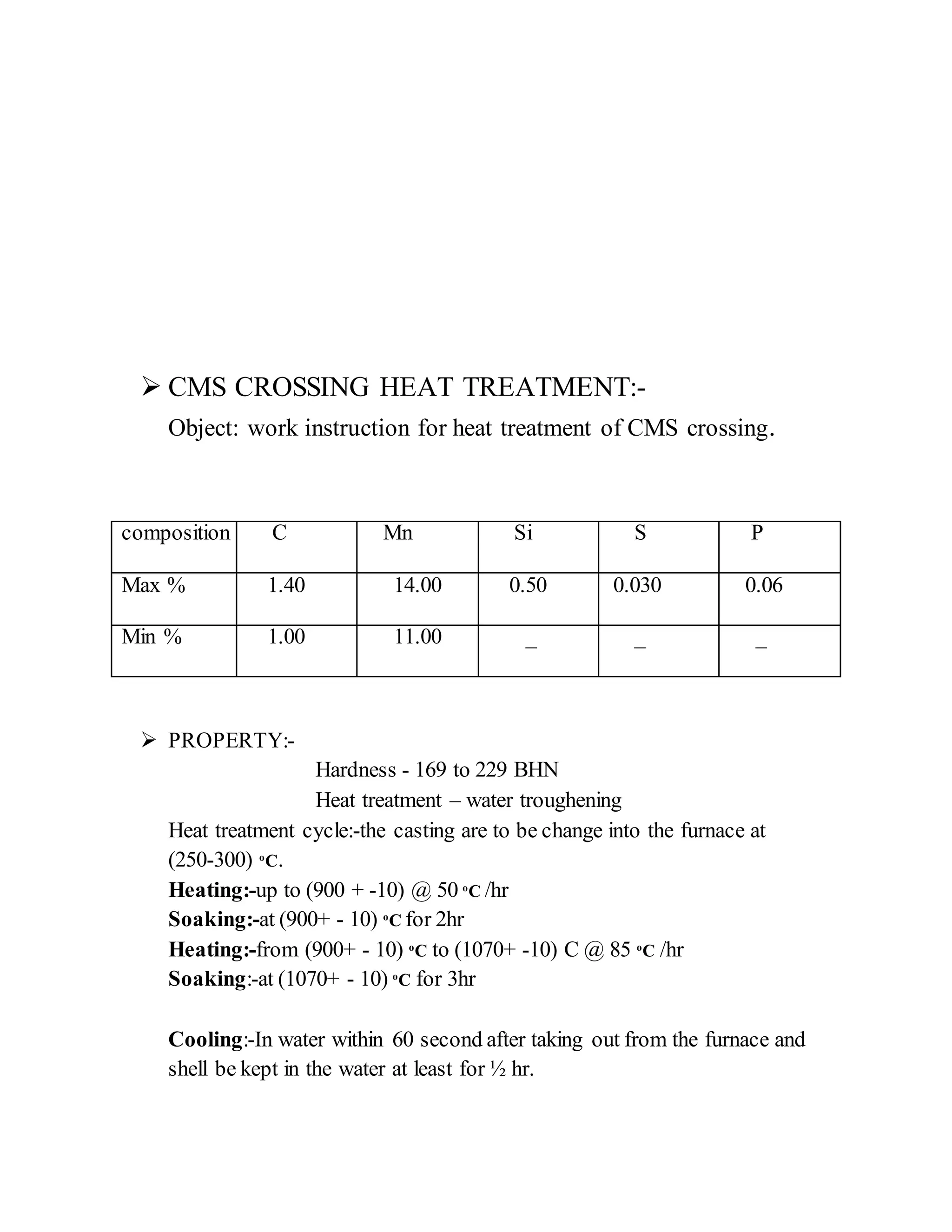This document provides information on electric arc furnaces used for melting and heat treatment. It discusses:
- The components of furnaces including energy sources, refractory materials, and heat exchangers.
- Types of electric furnaces including alternating and direct current furnaces.
- Construction details of AC electric arc furnaces including the hearth, roof, electrodes, side walls, and transformer.
- The melting process which consists of meltdown and refining periods requiring different power consumption. Larger furnaces require less power per ton of material.
- Charging materials like steel scrap, sponge iron, pig iron, and slag formers. Refining practices using oxidizing and reducing sl
